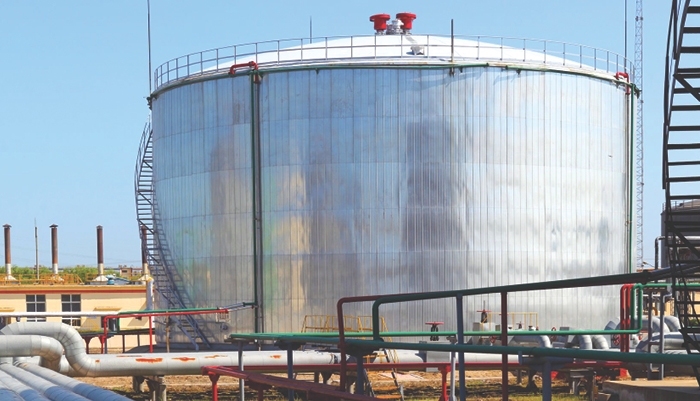Industry stakeholders react to EPA’s recent proposal and other developments
It’s been some summer for the renewable fuels industry — rule proposals, public hearings, legislation, court rulings — and at the center of it all is the Renewable Fuel Standard (RFS). A bipartisan policy passed in 2005 and signed into law by then-President George W. Bush, the RFS calls for renewable fuel to be blended into the U.S. fuel stream in order to displace diesel gallons and reduce greenhouse gas emissions.
On July 5, EPA released its proposed 2018 volume requirements for cellulosic biofuel, advanced biofuel, and total renewable fuel, and 2019 volume requirements for biomass-based diesel. Instead of increasing renewable fuel volumes, the proposal called for reductions across all categories except biomass-based diesel, which would stay at 2.1 billion gallons for 2019, the same volume requirement already established for calendar year 2018.
An EPA press release called the proposed volume requirements “reflective of market realities.”
Industry stakeholders in the National Biodiesel Board (NBB) begged to differ; shortly after the proposal was released, the organization issued a response in which NBB Vice President of Federal Affairs Anne Steckel declared, “Targets like this ignore reality and the law, inhibiting growth in the industry.”
And on August 5, in a scheduled public hearing on the RFS proposal, Donnell Rehagen, chief executive officer of NBB, stated: “The proposed numbers shortchange the progress we have made and are a step back for the RFS, job creation, small businesses and rural economies … Setting biomass-based diesel volumes as a floor, below even current production and well below capacity, ignores economic realities and the real intent of the law, which is to grow demand for advanced biofuels.”
RFS volume proposals are known to sometimes fall short of final volume requirements, which are typically issued in the fall. Nevertheless, the notion that advanced biofuel volume requirements might decrease and biomass-based diesel requirements remain stagnant, at a time when industrial and residential consumers increasingly look to renewable energy to reduce their carbon footprints, came as a shock to many producers, refiners and other biofuel industry stakeholders.
With this in mind, Oil & Energy reached out to AMERIgreen Energy Vice President of Operations Jason Lawrence to get his take on possible impacts of the new RFS. Based in Lancaster, PA, AMERIgreen is an energy wholesaler with biodiesel and biofuel-blended heating oil distribution points throughout Pennsylvania, New Jersey, New York, Connecticut and Massachusetts.
On Northeast Supply
Asked how the 2018-2019 volume requirements might affect the Northeast U.S. states’ biodiesel and Bioheat® fuel supplies, Lawrence said, “I don’t think there’s going to be too much of a disruption. The industry today, depending on who you ask, can easily hit the mandated volume, specifically for biodiesel.”
An experienced renewable fuel procurer and hedger, Lawrence points out that the biodiesel supply infrastructure has evolved in the Northeast, such that the fuel now enters the region through a number of different channels. “A lot of the supply is waterborne, coastal. There are some domestic plants that can achieve what’s needed. There’s also the rail supply.”
While the amount of supply available shouldn’t change much, the modes of that supply may shift, Lawrence says.
“I think you’re going to have bigger tank leases that need to come out and a bigger supply source coming on because of the modes of transportation coming in. I imagine some of the players change, but I’m confident the Northeast can handle the changes. The reason I say this is that years ago the region was supplied very adequately without a waterborne vessel.”
Still, some say there’s cause for concern. Reached for comment, New England Fuel Institute (NEFI) Regulatory Counsel Mark Morgan remarked that, “Biodiesel blending has risen every year under the RFS, which has been good for those in the industry interested in marketing Bioheat® fuel.” And though biofuel-blended heating oil sales generate Renewable Identification Numbers (RINs) that can be sold to meet volume requirements, “NEFI’s current concern is not how much biodiesel is added to oil under the RFS, but whether there is enough supply of biodiesel to blend,” Morgan says.
On Point of Obligation
Another topic of debate since the RFS was first established has been the point of obligation. Under the RFS, the point of obligation — or responsibility for blending renewables into the fuel supply — rests with oil refiners. Recently, however, there has been a renewed push by some refiners to move the point of obligation downstream to oil retailers.
“The EPA decided not to take up moving the point of obligation under the RFS in the rulemaking for the 2018 standard,” Morgan says, “but that doesn’t mean it may not take it up in the future in its own standalone rulemaking based on concerns that the RIN market is being manipulated by non-obligated blender parties.”
Oil refiners pushing for a shift in the point of obligation have claimed that non-obligated blenders sometimes sell RINs to non-blending obligated parties at unfairly high prices, knowing that the obligated parties cannot generate RINs on their own but remain dependent on the RINs market.
Speaking from an independent standpoint, Lawrence says, “I think there are arguments to be made on both sides as to where the point of obligation should land. By moving the point of obligation downstream, you can ultimately have a little more clarity. From an RVO [Renewable Volume Obligation] standpoint, the refiner may or may not know if gallons are indeed being exported, which may or may not impact compliance.
“On the other hand, as it stands today, we know the program works. One of the stresses that may be put on the system is you’re going to potentially increase the compliance headache by changing the definition of ‘obligated party.’”
Morgan says, “It is highly unlikely that [EPA] will reconsider the point of obligation, but not impossible. I am sure proponents will keep trying.”
On Tax Credits
Finally, one of the biggest considerations regarding biofuel distribution in 2017 and onward is the $1-per-gallon blenders’ credit, which expired at the end of 2016. Since then, several pieces of legislation have been introduced to either reinstate the blenders’ credit or convert it to a producers’ credit.
NEFI has drafted a letter of support for the “Biodiesel, Renewable Diesel, and Alternative Fuels Extension Act” (H.R. 3264), which would extend the blenders’ credit through 2017 but phase it out by 2022, providing $1 per gallon in 2018, $.75 per gallon in 2019, and $.50 per gallon in 2020 and 2021. (Read NEFI’s letter of support at congressweb.com/NEFI/14.)
The Advanced Biofuels Association (ABFA), National Association of Convenience Stores (NACS), National Association of Truck Stop Operators (NATSO), Society of Independent Gasoline Marketers of America (SIGMA), Petroleum Marketers Association of America (PMAA) and the American Trucking Associations (ATA) have also endorsed H.R. 3264.
As to whether the expiration of the blenders’ credit might affect biodiesel and Bioheat® fuel supplies and prices, Lawrence points out that a number of different factors, including the heating-oil-to-soybean-oil spread, also come into play when determining blend prices. “The market functions more efficiently with a credit in place, but the market has also matured, functioning with it on and with it off,” he adds.
That being said, there is no doubt that a five-year phase-out would bring some much-needed certainty to the industry. “If we had some certainty over the last 10 years, infrastructure, plants, and people could have been added to provide a more robust industry as a whole,” Lawrence says. “Lack of political leadership in this regard has created another challenge.
“There are a lot of challenges in the industry, which have a multifaceted impact. Understanding the importance of a sustainable energy-independent future that relies less on carbon-intensive fuels is the entire purpose of the RFS program, so having that political will to put the American economy and its citizens’ best interests at the forefront requires leadership, and that’s the environment that we all work and play in.
“I for one am proud to say that in the midst of all this, we’ve done a very good job overcoming those hurdles on our own.”





